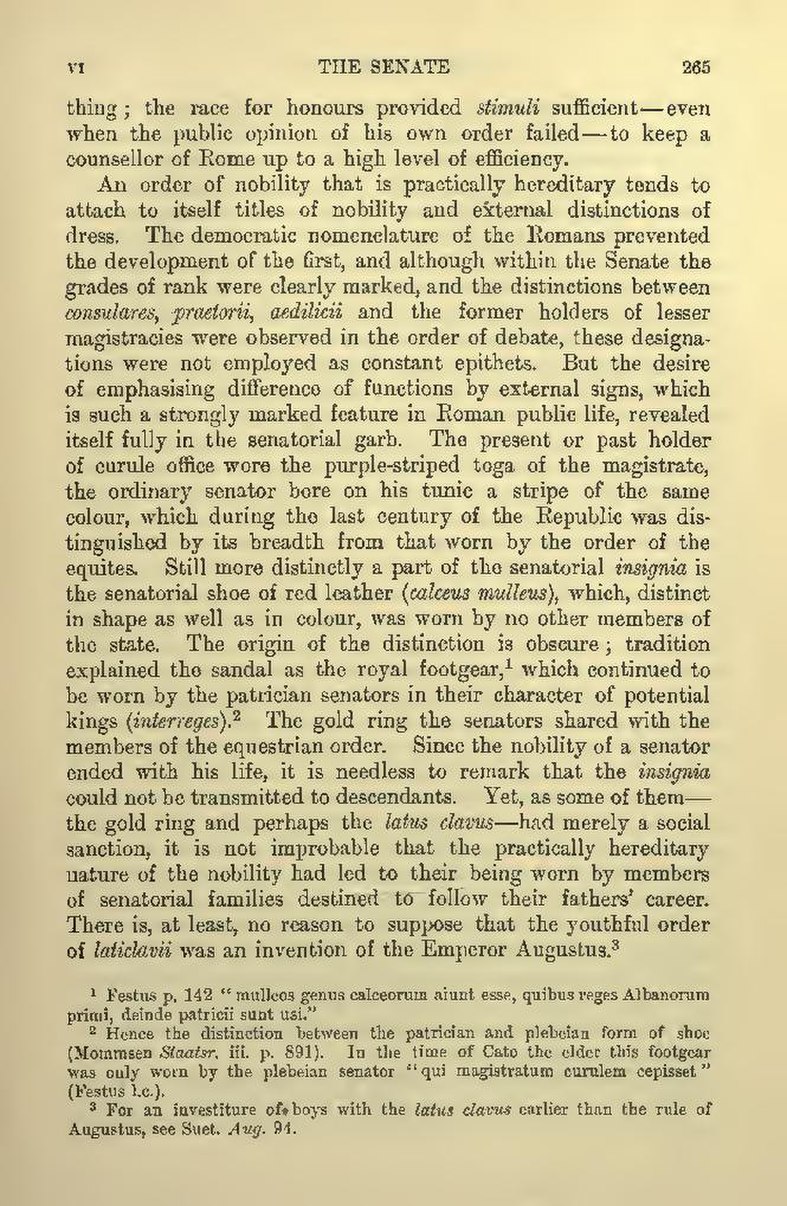- thing; the race for honours provided stimuli sufficient—even
when the public opinion of his own order failed—to keep a counsellor of Rome up to a high level of efficiency.
An order of nobility that is practically hereditary tends to attach to itself titles of nobility and external distinctions of dress. The democratic nomenclature of the Romans prevented the development of the first, and although within the Senate the grades of rank were clearly marked, and the distinctions between consulates, praetorii, aedilicii and the former holders of lesser magistracies were observed in the order of debate, these designations were not employed as constant epithets. But the desire of emphasising difference of functions by external signs, which is such a strongly marked feature in Roman public life, revealed itself fully in the senatorial garb. The present or past holder of curule office wore the purple-striped toga of the magistrate, the ordinary senator bore on his tunic a stripe of the same colour, which during the last century of the Republic was distinguished by its breadth from that worn by the order of the equites. Still more distinctly a part of the senatorial insignia is the senatorial shoe of red leather (calceus mulleus), which, distinct in shape as well as in colour, was worn by no other members of the state. The origin of the distinction is obscure; tradition explained the sandal as the royal footgear,[1] which continued to be worn by the patrician senators in their character of potential kings (interreges).[2] The gold ring the senators shared with the members of the equestrian order. Since the nobility of a senator ended with his life, it is needless to remark that the insignia could not be transmitted to descendants. Yet, as some of them—the gold ring and perhaps the latus clavus—had merely a social sanction, it is not improbable that the practically hereditary nature of the nobility had led to their being worn by members of senatorial families destined to follow their fathers' career. There is, at least, no reason to suppose that the youthful order of laticlavii was an invention of the Emperor Augustus.[3]
- ↑ Festus p. 142 "mulleos genus calceorum aiunt esse, quibus reges Albanorum primi, deinde patricii sunt usi."
- ↑ Hence the distinction between the patrician and plebeian form of shoe (Mommsen Staatsr. iii. p. 891). In the time of Cato the elder this footgear was only worn by the plebeian senator "qui magistratum curulem cepisset" (Festus l.c.).
- ↑ For an investiture of boys with the latus clavus earlier than the rule of Augustus, see Suet. Aug. 94.
